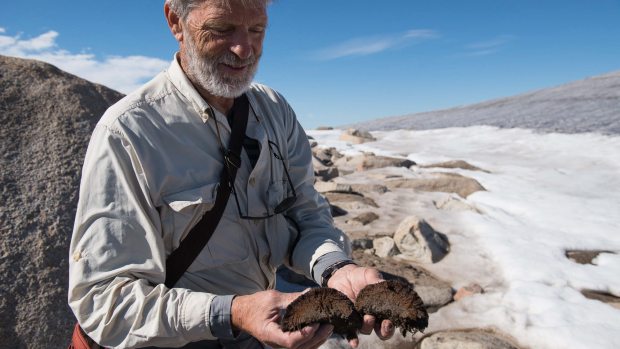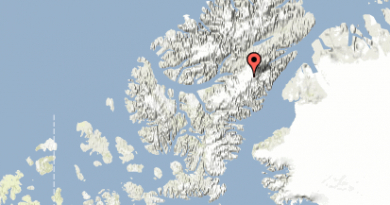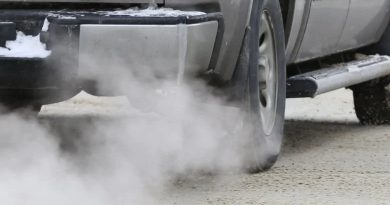Study: Eastern Canadian temperatures hotter now than in 44,000 years

Matthew Kennedy
Ancient plants exposed by newly melted ice on Baffin Island suggest that summers in the eastern Canadian Arctic are warmer now than they have been for at least 44,000 years, and possibly for about three times that long, according to a new study published online this week in the journal Geophysical Research Letters.
Those rooted plants were ice-covered even 11,000 years ago, when the northern hemisphere was at its closest possible position to the sun due to the planet’s tilt and rotation, the study says. In that period, known as the Holocene Thermal Maximum, the northern hemisphere received 9 percent more solar heat than it does today.
With the eastern Canadian Arctic now basking in warmer summers than even at that period, the only logical explanation is man-made carbon emissions, said project leader Gifford Miller of the University of Colorado.
Natural cycles cannot explain the results, he said.
Miller, associate director of Colorado’s Institute of Arctic and Alpine Research, and his fellow scientists based their research on samples collected over three field seasons on Baffin Island. There, the researchers collected fist-sized mosses that were popping out of newly-uncovered earth. The old plants were measured by radiocarbon dating as 44,000 to 51,000 years old. Since radiocarbon dating cannot measure reliably beyond about 50,000 years, the newly uncovered plants could be could be much older — up to 120,000 years old, according to Miller and his fellow researchers.
Well-known examination of ice cores from nearby Greenland shows that the last time the Arctic was potentially as warm as it is today was 120,000 years ago, at the end of the last interglacial period.
No matter how old the dead plants are, they didn’t appear at first to be much different from the young plants growing far outside the ice’s edge, Miller said in a telephone interview.
“These plants are rooted. So when they come out, they look just like the tundra plants that are alive, but they’re dead,” he said.
But the dead plants, once exposed to the elements, can crumble or else disintegrate in wind or water, Miller said. So he and his colleagues, ferried to Baffin Island by helicopter, had to work fast to collect their samples.
Those very old plants were, until the recent melting, held fast by high-altitude ice that did not move around, Miller said.
While probing the edges of that ice, the scientists did find other objects exposed, including caribou bones. But since animal bones are mobile, they don’t provide as much information as the old, rooted plants, he said.
“The nice thing about plants is we know they haven’t moved,” he said.
Among the 365 samples collected were younger plants found at lower elevations, covered up by ice for about the last 3,000 to 4,000 years, Miller said. But those areas of ice were more dynamic and mobile, formed during a relatively recent 5,000-year period of cooling, when local summer temperatures dropped by about 2.7 degrees Celsius, according to the scientists’ research.
The fact that there was cooling in that period, which included the Little Ice Age, makes the discovery of newly exposed plants that are at least 44,000 years old even more significant, Miller said. It means that the region’s heat-up occurred rapidly in the last century, and is likely to continue there at a similarly rapid pace, he said. Commonly used models of future warming are probably too conservative, he said. “The models are underestimating Arctic amplification,” he said.
Miller and his colleagues returned to Baffin Island this summer, and also began collecting and testing plants from Svalbard, Greenland and Iceland to see if they are of the same vintage.
Contact Yereth Rosen at yereth(at)alaskadispatch.com



